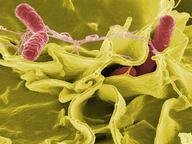Quiz Answer Key and Fun Facts
1. What is another name for leprosy?
2. Who was blamed for bringing leprosy to the Hawaiian islands?
3. Which of these statements is NOT true of leprosy?
4. What is the major influence on whether or not someone will contract leprosy if exposed to the disease?
5. Aside from humans, what other animal is susceptible to leprosy?
6. Which of these diseases are closely related to leprosy?
7. Before the use of antibiotics, what was the most common way leprosy was handled?
8. Which of the Hawaiian islands had a very well known leper colony?
9. Father Damien, who cared for the people sent into exile in Hawaii due their illness, came from which European country?
10. Now that we finally have antibiotics, which one was first used in the treatment of leprosy?
Source: Author
mdemma
This quiz was reviewed by FunTrivia editor
crisw before going online.
Any errors found in FunTrivia content are routinely corrected through our feedback system.

